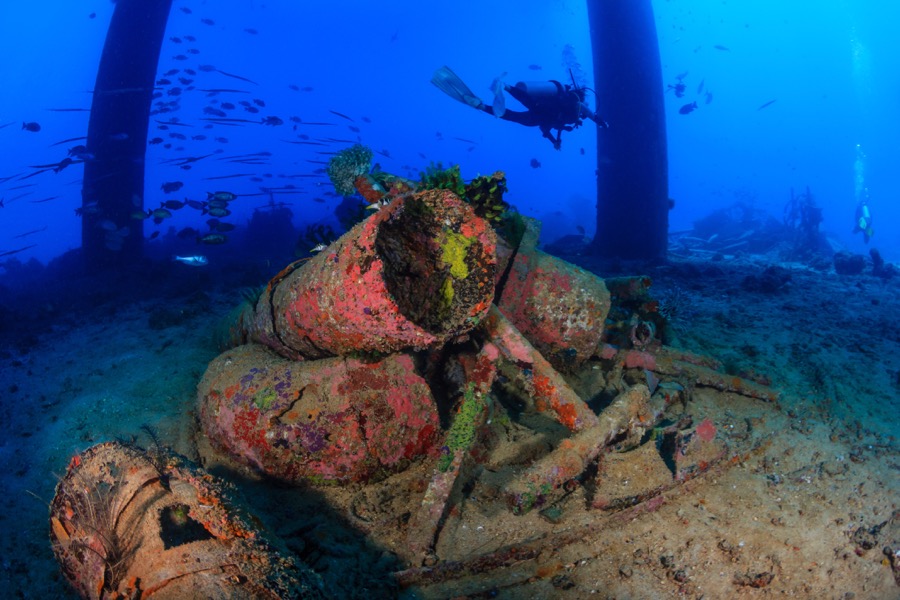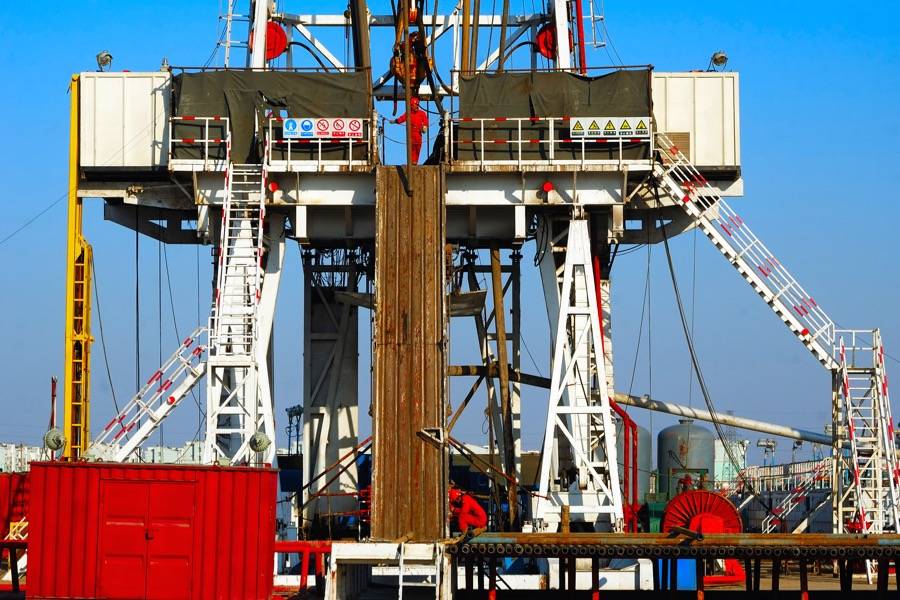INTRO: This article covers the topic of the smart stacking of rigs in relation to an industry downturn like the one we’re still experiencing. We answer a few questions and then look at how the industry has adapted. Outside of the upstream sector, many people in the industry are unaware of the differences between the cold stacking and warm stacking of drilling rigs. Hopefully we can shed some light on the topic here.

Rig stacking is a market indicator
We all get inundated with oil price predictions, and opinions about politicians and leaders speeches on a daily basis. We all know about technical analysis, business confidence and the conferences of world leaders. If someone were to map all of these predictions and speeches, how many would be in line with reality? More than 50%? Less than 50%?
There are some figures that don’t lie and are true guides to an industry. Historic price charts offer clarification in the rear view mirror. Inventory numbers are a good indicator, global consumption figures are as well.
The best market indicator in the oil and gas industry is probably the active rig count. All the political or CEO confidence in the world wont make a difference to the people who can see a cold stacked ‘rig graveyard’ rusting away.
Downturns force hard decisions
The recent downturn in the oil and gas industry was hard to predict, and more importantly hard to estimate in duration. A downturn massively changes the dynamics of utilization rates of manpower and equipment.
Some decisions are relatively easy for an oil company, for example there are accounting policies that can defer tax or expenses. Other decisions are challenging, but need to be done for survival, an example of this might be freezing a new project, or laying off workers. The hardest decisions of all must be the ones where there’s no good answer, and its a case of choosing the lesser of two evils, nether satisfactory. One example of a hard decision might be forward hedging strategies when margins are thin. Another is how to stack a rig.
This article will take the form of a list of common questions, with brief answers. This means if you know the answer to one, you can just scroll down to save time!
What is warm stacking?
Warm stacking is where a rig, platform or drillship is taken to port, but kept running in a similar state to as if it was operating. This means that the lights are on, the engines are running and there is a smaller, but adequate crew on board. This is easy to remember as the ‘warm’ can refer to the engine room, kitchen or the crew beds…
The reason why rigs are warm stacked is so that they’re ready to go when needed. Rigs are warm stacked all the time, even during boom times, but usually for short periods such as when they’re in-between contracts or locations.
The ocean is a hostile environment where there’s humidity, salt water and battering from the weather. Even in a relatively short period of time, rig conditions can deteriorate, meaning a cold stacked rig might not be available when needed, or need expensive repairs before redeployment.
What is cold stacking?
Cold stacking is where a rig is stored at minimum expense. If it’s an older generation model, unlikely to work again, little will be done, and the rig will sit gathering rust. There will still be a minimum level of attention needed, for example there has to be security staff to prevent vandalism. General inspections, waterproofing and repairs need to be done to avoid the rigs becoming dangerous, or for some materials leaking or falling into the ocean.

If a rig is perfectly operational at the time of cold stacking, and is being stored for market reasons, then a higher level of care and attention will be needed. The cold stacked rig will have equipment serviced and then wrapped in protective material. Engines will be filled with protective fluids to preserve their working capabilities. Dehumidifiers will be installed into rooms with critical electrical equipment. There will be more crew members on-board conducting checks, audits and repairs, although this would be very much a skeleton staff.
What’s the difference between warm stacked, and cold stacked drilling rigs?
Apart from the obvious differences highlighted by the previous definitions, the main difference is based on strategy and finance. The decision makers involved will need to use all of their experience and contacts to determine how long the rigs might be idle. Warm stacking is obviously the best option if the rig is inactive for a short period. It can be deployed quickly, with no unpleasant surprises. Cold stacking is where the outlook is bleaker, and this is why some people call cold stacked rigs ‘mothballed’.
The financial cost of cold stacking is higher in the beginning, because protective and preemptive maintenance tasks need to be performed. Fairly soon, a cold stacked rig will deteriorate, and need a more expensive set of redeployment processes, refurbishment and checks.
A warm stacked rig will be in even better condition than an active rig, since there will be no stresses on any of the parts. A cold stacked rig will deteriorate quicker than an active one. There will be a point of deterioration where a cold stacked rig will become obsolete.
So, the difference that matters, is in the duration of the projected, (and real), idle time for the rig. If a cold stacked rig is ‘brought out of retirement’ after many months or years, it can end up costing millions in refit bills.
What is smart stacking?
The approximate cost per day of a warm stacked rig is $40-60,000 depending on the age and type. A modern state of the art rig will cost more than one that has older technology. Cold stacking reduces the bill tremendously, coming down to under $10,000 per day and as little as $2-3,000 for those that aren’t likely to return to work again. The difference between two and sixty thousand is massive, especially when measured in months.
The problem is that when a downturn happens, no-one knows how long it will last. In addition, some companies and regions are effected more than others. Some get affected first, and some last. Sometimes a downturn can benefit an individual company, if it means that competitors go out of business. There can end up being a much bigger slice of a slightly smaller pie…
The smart stacking of rigs involves finding ways to compromise, to bring the costs of a warm stacked rig right down, but to avoid the disadvantages of a cold stack scenario.
One example is where rigs are stored side by side, even if some of them will need a longer initial journey. The most expensive part of a stacking operation is the labor cost, as each member of staff needs to get paid. Some jobs roles can’t be reduced, for example there needs to be adequate security on each rig. Other jobs are easier. Many of the auditing and maintenance staff can easily go from one rig to another if they’re all side by side.
(Instead of smart stacking, some industry insiders will refer to these rigs as semi-stacked).
How is the industry doing? Have the stacking policies helped companies survive?
The short answer is that the industry has been taken surprise by not just the severity, but the length of the downturn. We’ve seen warm stacked rigs that are likely to never work again. We’ve also heard rumors that many rigs have been kept warm as a form of ‘window dressing’ to lessen the impact, and improve the perception for shareholders and workers. If you were an executive, and needed a capital bridging loan, or your share price was taking a beating, you might not want to cold stack the majority of your fleet, at least until the ‘next quarter’.
There are companies that have done a good job of smart stacking. Ensco and Transocean have reported that they’ve implemented a number of procedures that have reduced the number of staff, and preserved equipment without damaging the rigs potential to go straight back to work.
Smart stacking requires an upfront cost of up to $5 million, but has reduced day costs down to around $15,000. As with all of these decisions, careers and companies rest on the decision making abilities of the executives and accountants. Bad decisions in the area of rig stacking will result in bankruptcies. This is something else that will be seen in the rear view mirror, in a year or two from now.








Presumably the dehumidifiers are industrial standard. What is the extraction rate of one of these? Thanks
Hi Simon,
Here’s a good source to find out some stats:
http://blog.eldridgeusa.com/why-you-should-be-using-desiccant-dehumidifiers-instead-of-air-conditioning-for-offshore-lay-ups
Cheers!
Great article in explaining the crucial difference between warm and cold stack.
Anywhere can I find more information on warm stacked rigs in South East Asia?
Hi Justin, thanks for taking the time to comment. Here’s a decent article from earlier this year: http://www.drillingcontractor.org/asia-pacific-rig-market-distressed-and-oversupplied-41805 . I doubt that much has changed since then, most of the growth this year has been US onshore, and the recent steadier oil prices have not quite translated into drilling activity yet. Although the outlook is improving all the time.
Do you have any procedure for Cold Stack onshore rig procedure
Please assist me in getting over procedure on mail id
[email protected]
Hello Justin,
We are layup managers in Brunei bay anchorage. Feel free to contact me should you need further info pertaining to warm rig stacked.
Reliable information on how Enterprises are managing their rigs, here at MEXICO, the contracts were down dramatically, and the panorama of how workout the Smart Stack, would defenetly help to be ready to get back to normal operations! this article help me a lot to understand the Point of View from the owners of the rig I’m working for, as one of manny of the personnel on board, feels insecure not knowing when we are going to get a. Contract for Drilling